- Locksmith & Home Security Technician
- Getting a career diploma in as little as 2 months.
- Gain experience with practical exercises and interactive assignments.
- Learn how to identify, create, and duplicate keys.
- Learn to work with several types of locks including safes, valuts, and auto.
- and more...
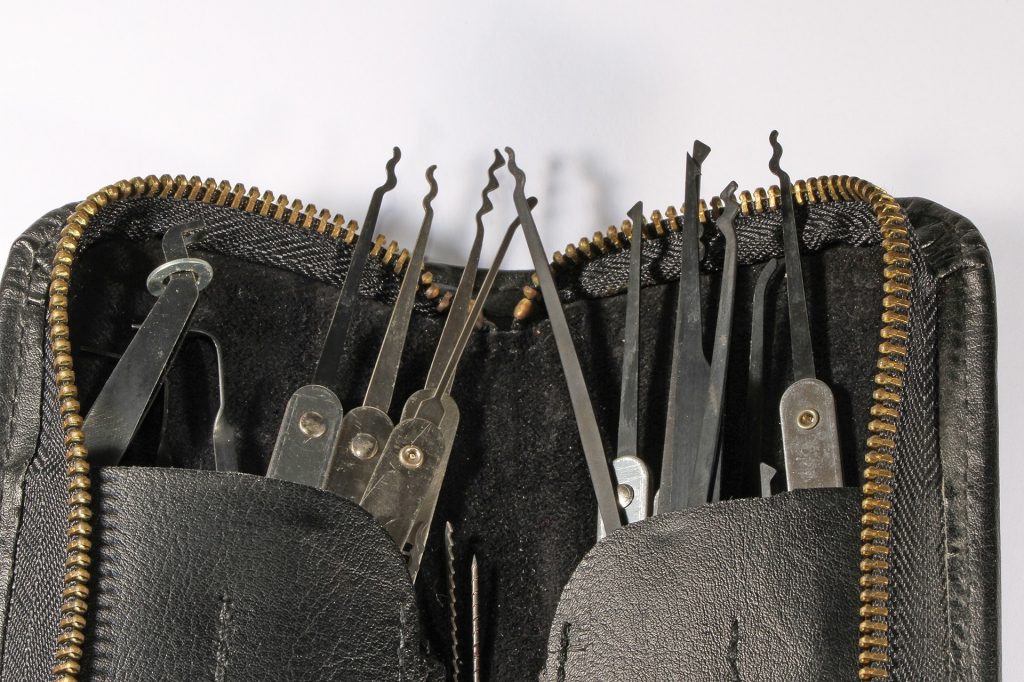
This article will help prepare you for success when choosing the best lock for your needs.
Whether you are new to the lock selection, an experienced professional, or a residential or business owner, this is the source for you.
We will teach you everything you need to know about choosing locks.
While this may not be an exhaustive resource, you can still find the information here useful.
This is because you will have the tools to learn more.
Table of Contents
- What Are the Mechanics of a Standard Lock?
- How a Key Works in a Lock
- Basics of Manipulation
- Lock Picking Tools
- How to Get Lock-Picking Tools
- Tensioning a Lock
- The Simplest Ways to Pick Locks
- The Hard Way to Pick a Lock
- How To Pick Locks With Security Pins
- Are There Any Other Ways to Pick Locks?
- Lock Style & Orientation
- Rules, Reminders, and Ethics
- The Bottom Line
What Are the Mechanics of a Standard Lock?
Almost every lock you encounter is a basic pin lock.
Whether it is a deadbolt, doorknob, or padlock, the most common type of lock uses this type of mechanical setting.
If you already know how the pin-locking works, then feel free to move on to the next part.
But it is essential to note that it is you will manipulate the lock effectively without knowing how it works.
For effective locking, know how the lock works.
The Bible
Sometimes referred to as a lockbox or book, the lock book remains stationary when the key is used.
It will be called the bible mainly due to preference and because it is a term that is difficult to confuse or merge with other parts of the lock.
When you insert the appropriate key into the lock, the driver’s springs and pins will cross the shear line exclusively in the bible.
The Plug
The Plug is also called the cylinder or core.
These two terms are referred to as the Bible of the Plug.
In this article, this part of the lock is known as a plugin.
The Plug is a cylindrical metal that rotates in the lock bay when you insert the key.
You can easily distinguish the lock connector because it has a key.
Insert a key or lock into the socket to communicate with the pins.
When the connector rotates, you can open the lock.
This rotation would mean that the key pins are located below the shear line in the connector.
The Pin Chambers
The grinds in the Bible and the Plug are long, interconnected holes.
These holes are full of pins. line a biblical foundation that presses down the chimney with a needle.
Furthermore, it is important to note that the needle chambers of the bible line up with those in the socket.
This will connect the bible to the plugin.
As long as the pins remain folded into the Plug and into the bible through the pin chambers, the Plug cannot rotate, and you can not open the lock.
The Shear Line
There is a space between the two parts to turn the Plug within the Bible.
This gap is the Shear line.
If something blocks the shear line, then the lock will not open.
To open the lock, you will need to split the piles of pins at the shear line.
Nothing can extend beyond the shear line of the biblical Plug.
Ensure the pins are above and below the shear line and that nothing sticks out.
Choosing a lock with safety pins is complicated because the pins are tied to the shear line.
The Key Pins
When you insert a key or lock the latch, your tools will communicate with the key pins.
The key pins have different heights.
They are visually recognizable because they eventually reach a rounded point that touches the key or the lock.
The key pins will remain in the socket when the lock selection is successful, or you insert the appropriate key.
The Driver Pins
Driver pins are for springs on one side and key pins on the other.
Drivers don’t have pointy ends.
They are usually flat at both ends and have a uniform height for each lock manufacturer.
While selecting a lock, the driver pins will not directly contact the picking procedure.
You can’t manipulate the driver pins by lifting the key pins.
When the lock is raised, the driver’s pins will be in the bible along with the springs.
The Springs
Each chimney pin needs spring tension so that the pins do not move.
The down or up pressure, which depends on the lock’s orientation, exerted by the springs can vary, even within the same lock.
The needle is on the right side of the shear line if you no longer feel the needle’s spring tension from that chamber.
The spring compresses and leans against the Bible to rotate the Plus and open the lock.
How a Key Works in a Lock
All lock components work together so that you can only open them with the correct key.
The idea is that one key will open only one lock.
Even if you and someone else have the average Quixet deadbolt or Master Lock # 3, you will not have keys that unlock each other or, hopefully, anyway.
This is simply because of how the key works.
Insert a suitable locking key into the keyhole.
The key pins will raise with the key grooves.
Both locks and pins fit, so they are all raised to the shear line even with piles of different pins sizes.
When you insert the wrong key, the key cut may not lift the key pins stack just high enough for the driver pin to clear the shear line.
Too high a keyhole can raise the pile with a pin so that the key pin moves to block the shear line.
The moment the pins are on their respective sides of the shear line, the hole allows the Plug to turn.
Then you can quickly turn the key, and the connector will rotate.
Turning the Plug moves a camera or a piece of tail that pulls a screw or a locked paw, then the lock opens.
Basics of Manipulation
I want to say that the choice of stopping works like a key in slow motion and interferes with the sequence of events.
For example, start by adding a little tension to the pins.
Use to move each stack with the needle so that the driver needle deals with the crush line’s biblical side.
This is part of a driven movement of the interrupt selection process.
When you insert the appropriate key, this will align the pin stems.
We will find out more about this later, but it is essential to understand that the choice of lock works by tightening and manipulating the pins on the needle, similar to how a key will open the door.
This is the fundamental premise for choosing a lock.
For What Reason Do the Pins Stay Where They Are?
Lock chambers should be made of metal and have a straight line or precise diameter.
This means that some ventricles are more inclined to the right or left.
When applying a rotary clamp to the connector, you will feel the resistance when the pins are attached.
This resistance is the grinding of the chimney with pins against the pin chamber’s metal, which means it is ready for installation.
Flexible needle piles have no resistance because their pin chambers align far from the direction of rotational pressure.
As soon as the tie pin moves above the shear line, it fits less than perfectly into the pin chamber allowing the connector to rotate slightly.
The driver’s pin will not push back into the socket as the plug turns.
Do the Security Pins Affect Lock Picking?
Although you need not worry about choosing the safety pins outside the gate, it is still important to know what they are.
Safety pins are driver’s pins and key pins cut into shapes and push them into the shear line.
This will secure the lock because something will stick between the Bible and the Plug.
There is no tension in the spring as the shelf that holds the pin driver on one side of the shear line maintains safety in place.
This keeps the chimney needle under spring tension, which creates confusion as to why the lock is not raised.
Lock Picking Tools
You need special tools to select a lock.
As you may already know, the basics of lock manipulation are tightening the plug, and the pins moving within the wrench.
You can check out some of our past articles for more specific instructions on what items you need in your first lockset.
But here are the essential tools you need to get started with lock selection.
Tension Wrench
Tightening tools come in a variety of shapes, sizes, and profiles.
The two most common wrenches are pendant (for wrench tension) and L Bend (for wrench bottom).
It’s essential to have a wrench that you can do without blocking needles.
It helps if you also have a tightening tool, not a license key.
If you lose tension, you will regain any lock choices you make.
Rake
A Rake is a picking tool on how to choose locks simply.
Rake is working on the idea of moving all the pins at random and moving fast.
The purpose is to keep accidental lock opening.
The most popular rake profiles are L Rake, City Rake, and Rich.
Hook
The hooks are standard, movable, and have many different thicknesses and sizes.
You can use this lock-picking tool to open complex locks.
You are looking for something that can move the button well with a hook.
It is necessary to have access to the pins to allow the use of each steak.
With hooks, you are looking for the broadest range of motion when lifting the lock.
How to Get Lock-Picking Tools
There are many ways of getting lock-picking tools.
Each has its upsides and pitfalls.
Still, no matter if money, machining resources, resources, etc., are an issue, there is a solution for you.
Buying
If you are willing to spend money, you can save time and effort.
But above that consideration, you will also make some assumptions about the quality you can get.
As long as you buy your choice of locks from the right company, you can know what to expect.
While you may need to polish tools or do some cleaning work, some brands can give you what you need to start choosing a lock directly from the package.
Making Your Own
Locking locks are only pieces of thin metal cut into a particular shape.
You can get the most popular lock selection profiles and use these templates to invent your lock selection.
It will take you the most time, but you have a chance to get something better, more unique, and for less money than if you bought online lock options.
Improvised
It is a fact that in a tight spot, you can simply use bobby pins or paper clips to form makeshift lock choices.
These types of locking tools are probably ineffective.
Where you can get the wrong dimensions when making your own choices, makeshift options are content with what you can get.
Often improvised decisions are for people who want to try their hand at choosing a lock.
They are not willing to take serious time or money.
You can do this easily and quickly, but with mixed-quality results.
Tensioning a Lock
How to choose locks starts with the proper tension.
No matter how you look for a locking option, it starts with tightening the connector.
There are various approaches to even something as simple as key-to-key insertion.
Top of the Keyway
Many lock selectors prefer to tighten the key’s upper part, aka TOC, because specific keys may be hampered by the lower amount of the key’s tightness.
The TOCs have a dual end and are easy to use.
Bottom of the Keyway
Most lock collectors start with the lower end of the key lock because many kits for beginners come only with these tools.
You can easily make this from a windshield wiper.
Avoid tangling the tool between the Plug and the Bible when using BOK.
Tension from the lower part of the key can slip quickly to prevent the lock from opening.
Using the bottom of the key tools can lead to many setbacks.
TOC offers better initial success.
It is essential to mention that you will have to be highly aware of the types of problems you are potentially open to.
In addition to the tools you use, the biggest concern with tension is the amount of pressure you put on the lock.
How you tighten the lock determines the success of the lift.
Here’s a Basic Manipulation Checklist:
- You can make a lot of stressful mistakes.
- The pressure can be too high, so all pin clamps are binding.
- Tension may be too weak to rotate to catch the driver’s pins on the shelf line’s shear.
- Another classic trick is to go the wrong way.
- If you tighten the Plug to the right when it should be to the left, you may be able to get the pins to suitable heights, but the lock itself will not open.
- Always apply tension in the direction in which you would turn the key, generally if you used it when you picked the wrong lock.
- You will either have to start over or use a rolling pin to use the shear line’s pins.
- To learn how to apply tension, feel both ways with your key.
The Simplest Ways to Pick Locks
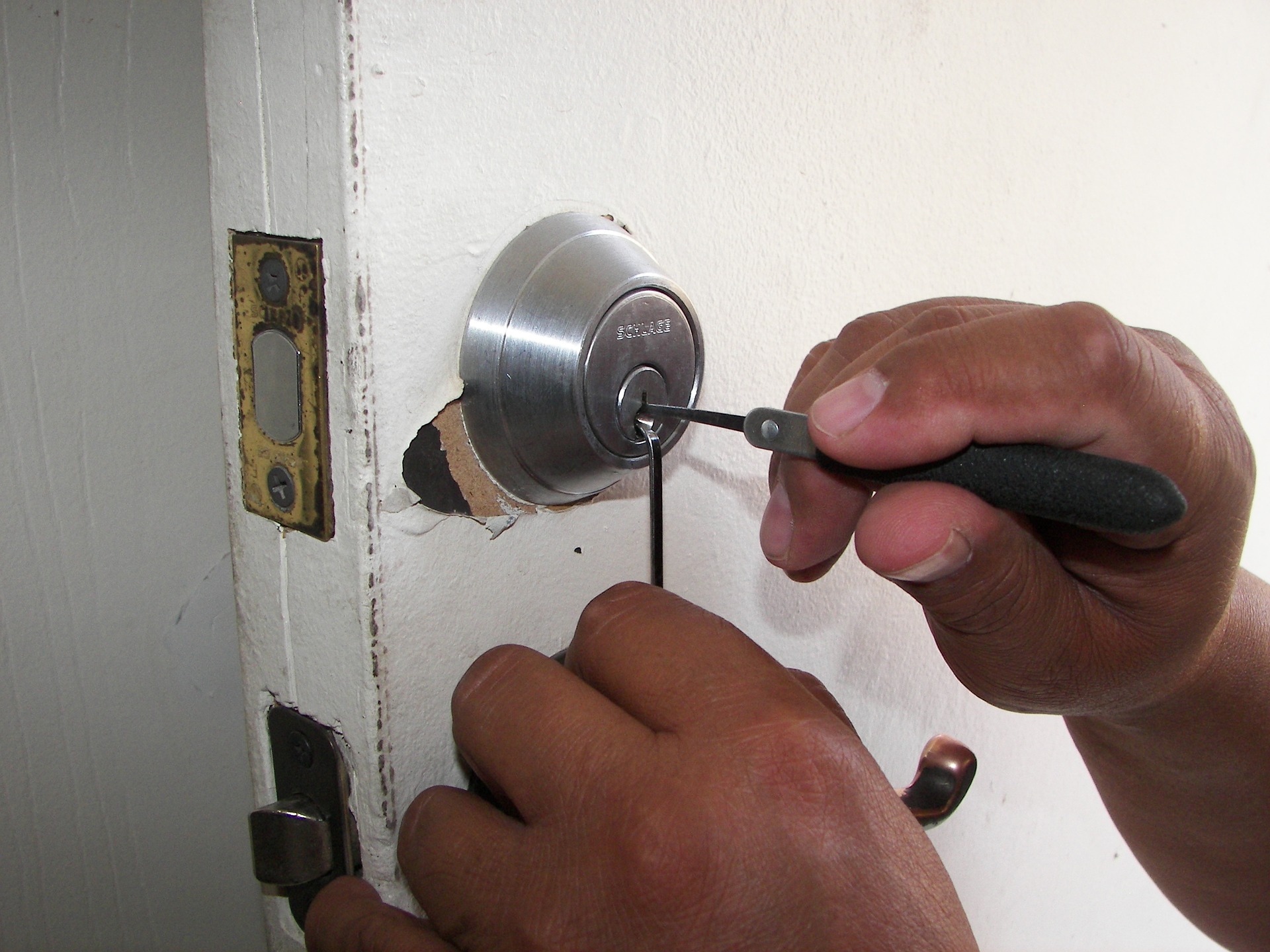
Raking is the simultaneous movement of all the pins.
The way is not depending on a deep understanding of what is going on in the lock.
You do not have to understand what is happening in the lock while manipulating it.
But, you should know the different steps in the process.
The procedure is quite simple and does not involve much skill if it fails.
Yet, it is a fact that there are many possibilities for mistakes that can be easily made.
The most common mistake is the amount of tension you use.
The second mistake is probably because the lock will not open with this kind of lock picking.
You may need to use the hard way to select a lock.
There are seven steps on how to pick a lock easier.
- In the first step, you need to insert the clamping wrench and apply the clamp.
- It is essential to ensure it rotates in the right direction).
- Then you will have to insert a rake into the key.
- Pull the rake in and out of the key.
- You also have to move the rake up and down in the key.
- Then repeat steps 3 and 4 for no more than a minute or two.
- Turn the tightening wrench to see if the lock is open.
If the lock does not open, disconnect the voltage, change the voltage, and start again.
The Hard Way to Pick a Lock
Choosing a single pin (SPP) is problematic for picking a lock.
This means that you need to use something like a hook, as described in the Locking Tools section.
When choosing a single pin, this is what it sounds like.
You move each pin individually.
You need to understand the most profound things about the lock.
This means knowing more than just how the primary lock works.
You need to understand how your lock works when you take it.
A big part of choosing single pins is the sense of feedback that the lock gives you.
It is a well-known fact that the lock communicates with you.
Feel the resistance, the tension of the spring, and everything in the lock.
And you will have to feel this needle after needle through all the needle piles.
Try attaching a pin to feel what kind of resistance the telegraphic binding order is.
Because of the Basics of Lock Manipulation part, you probably know that the order in which you choose the lock is random.
The hardest part of this process is understanding what the lock does.
If you do not receive lock feedback or interpret the input, this is the wrong lock selection method.
How to pick locks difficultly requires a more intimate understanding of the lock.
There should be a sense that more than knowledge transmits theoretical knowledge into practical experience.
The most dependable way to enhance this skill is to exercise.
Some natural talent can improve your progress schedule, but everyone may be lucky or feel like they have lost all their progress.
The trick is to stay as calm and focus on the basics as possible.
Here are the nine easy steps to do it:
- Firstly you will have to insert the tightening wrench and apply the tightening.
- It is essential to note that you will have to ensure it rotates in the right direction.
- Then you will have to insert the hook into the key.
- Starting at the back of the lock, lift each pin as it moves towards the lock’s front.
- It is essential to mention that you can start at the front and work from the back if you choose.
- Ignore all needles that are spring. The next thing you have to do is lift the pin that gives you resistance.
- Release the tension slightly until the pin stack is raised.
- You may hear a slight click and feel the Plug rotate somewhat.
- Handle the pin wrench lift without any pressure or resistance.
Repeat steps 3 to 6 to turn the tension key to see if the lock is open.
If the lock does not open, remove the tension, change the pressure, and start again.
How To Pick Locks With Security Pins
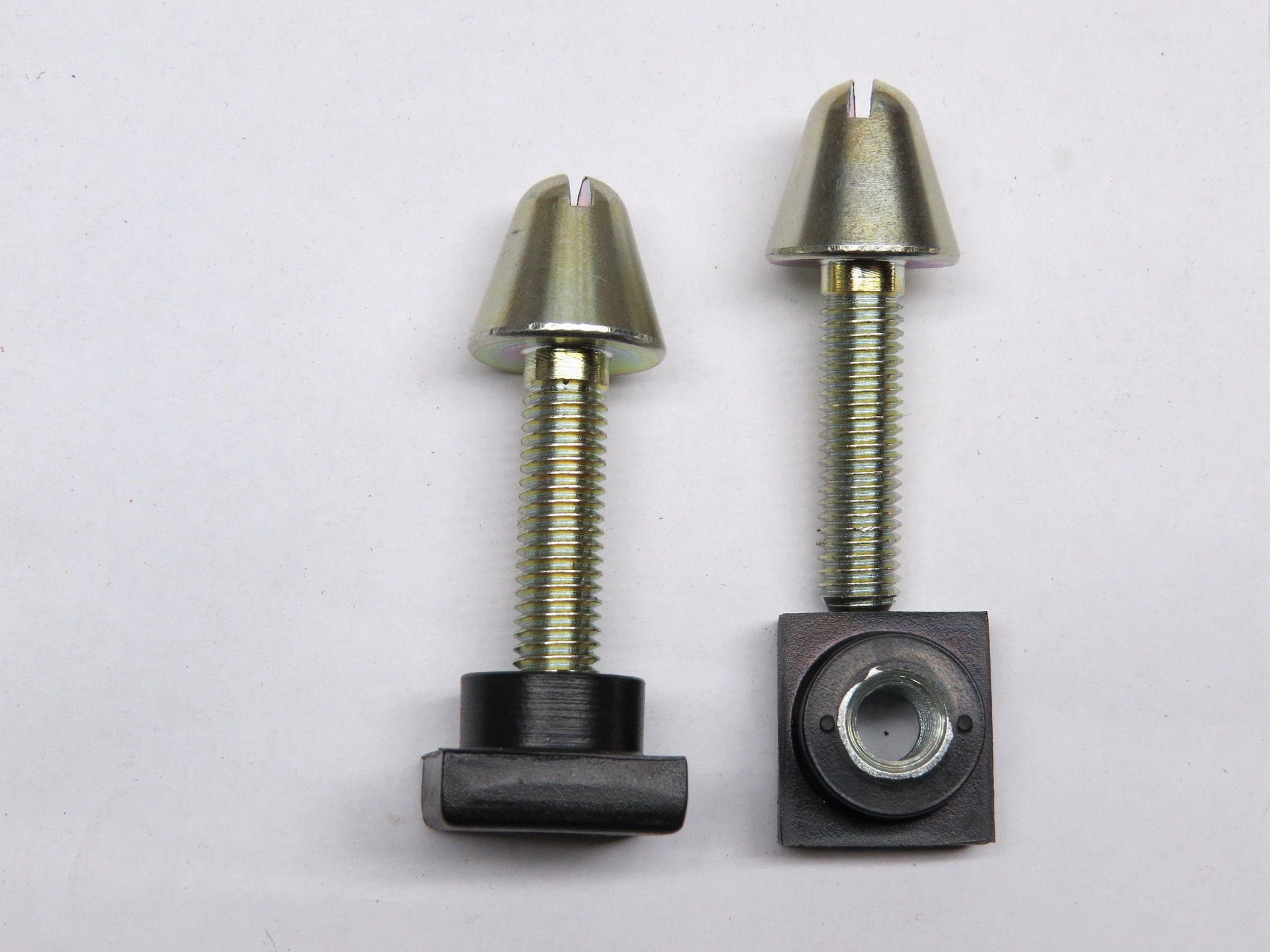
As we have already seen in the Basics of Manipulation segment, the safety pins change how the manipulation works by adding a layer of additional complexity.
It helps you recognize when the lock does not open due to safety pins.
The driver pins are above the shear line, but the driver pins are stuck between the Plug and the Bible.
With a needle in this position, the sensation you feel gives the wrong lack of spring voltage.
The safety pin attached to the shear line is called a fake set.
When the needle chamber is threaded, a false set’s likelihood increases.
This variety of precautions creates multiple cornices in the lock to catch the safety pins.
The lock often telegraphs why it does not open.
This may be subtle, but you will surely miss it if you do not know what to look for.
To choose a safety pin lock, know what type of safety pin you choose.
Pins, such as pin pins, and hand-sculpted designs, can create many unique challenges, but there are too many options to solve.
We are willing to refer to the safety pins that you are likely to encounter, and this should help you understand the types of approaches you should take when you know that there are safety pins in the lock you choose.
Spool Pins
Spool pins are one of the most popular types of safety pins.
These safety pins are part of making the lock.
They have an uppercase form “I”, a thin environment with many materials, hills, and long sections.
This format has a policeman’s needle caused by the needle chamber’s imperfect orientation.
The driver pin is in the shear line without ever clearing it, but the spring tension will start as if it is gone.
When you receive a fake spool pin set, you will see and feel a significant amount of rotation from the connector.
The coil’s thin part allows rotation while still stuck between the Bible and the Plug.
Ease the tension and push the pin, so the rod screams along the ridge long enough not to catch on the shelf until the shear line is free.
You can quickly drop other pins due to this tension reduction or insert a wrench pin that will stick to the shear line.
So be patient and precise.
Mushroom Pins
The “T” shape is similar to a spool needle with a mushroom-like appearance.
However, where the pulley has a thin middle, the mushroom needle has a vast middle that weakens only slightly as it approaches the cap of the “T.”
Furthermore, the resulting gradient slope loads your tension to rotate the Plug to impose a shelf that will catch the hat on the “T” shape.
The Plug’s rotation will not be as dramatic as it happens gradually and not all at once.
Serrated Pins
One of the most complicated safety pins is the serrated pins.
They are ribbed, thin, and stretched like several arranged and compact needles.
They do not feel like the fake set as the standard needle when inserted.
This makes them very difficult to detect.
They can also make other pins feel as if they are binding.
You can’t put the next pin when you tie the other pins until you finish the next step.
When all else fails, get ideas from others.
Then it’s time to dump the pressure and move on.
Words of Advice
The fact is that these fake sets are why the racket is rarely effective on locks that use safety pins.
We are willing to address you not to use a single pin described in section The hard way to pick a lock, and then you will have to access each pin.
Remember, when working with pins, you should never remove the tension together.
It would be best if you reduce the tension while maintaining it.
And make sure the reduction is not severe.
The harder you release the pressure, the more likely you will drop pins.
The more pins you release, the more time you will have to spend to get the lock back.
Are There Any Other Ways to Pick Locks?
We are willing to discuss different ways of picking locks.
Arguably, I have some of these methods that are technically locked down.
But I would say they are.
Selecting a lock is like manipulating a lock’s components without using the working key.
However, these methods are not achievable and only suitable for practical use.
We are unwilling to go into more depth if you do not know about other options for termination.
Lock-picking cannot be done using shortcut methods.
Each step is essential.
The additional lock-picking methods illustrate the complexity of lock selection.
Pick Guns
Now that you are pretty familiar with the process of raking, you can better understand how guns work.
Whether the pistols of your choice are manual or electric, they still need a wrench to tighten because they work like a rake.
The pick gun knocks the pins as you move the pick inside and outside the key, which is similar to a rake.
The idea is that this semi-automation will make a choice faster.
You will have to set how much you want to move the device down and up.
If you notice that the gun does not pop the pins high enough, it will not adjust and push the pins if the setting is too high.
Because this method does not give individual attention to the different stacks of pins, it is less likely to be effective when the lock has safety pins.
Bump Keys
The punch button works a bit like a gun but without the need for tension.
While trying to turn the key, hit it with a hammer.
Hopefully, the driver’s pins will jump into the bible as the key is hit with the hammer.
At that point, the sheer line will be clean, and the key can turn the connector for a moment.
The punch button is a key that fits into the key and has each groove cut to the depth that is as low as possible, for that make and model of lock.
You will also need a specific key depending on the lock you are trying to pick.
There are non-protruding locks that do not use the needle buffer system.
For more insight into the hit buttons, you can gather additional information in the articles on preventing the knocking of the lock and how the car keys work.
It’s like a rocket and a pistol, simultaneously moving multiple pins making this method unlikely to work on locks with safety pins.
Bypasses
When lock selectors talk about the bypass, they differentiate it from lock selection because you often do not manipulate the lock components that communicate with the key.
What you are doing is simply bypassing the regular operation of the lock by directly controlling the unlocking mechanism.
Of course, it is a fact that these methods vary, but you can see a few examples in the locks list that offer only a safe look.
To find bypasses, you can explore existing bypasses discovered by others or explore how the lock works on a mechanical level.
However, these methods require specific research.
It does not matter how complicated the lock is if it can be bypassed.
Safety pins do not secure the lock if you can avoid it.
To protect the lock against bypass, the locksmith needs to know the particular bypass technique and measurement to protect against it.
Lock Style & Orientation
The fact is that the type of lock that is provided can significantly affect how you will need to approach the locking.
As mentioned earlier, you can hang deadbolts, padlocks, and door keys.
And everyone will have their problems.
Padlocks
Keep the padlocks loose on the chain, which means you will need to hold them in your hand.
Picking a hand lock can take some practice as you find the correct positions to keep your tools and lock.
However, it is essential to note that not every padlock can be disassembled, so you may not be able to select it as an exposed core.
And in case you do not have a vice, there is no simple way to set the padlock.
Exposed Core
With a locked core exposed, you do not get a real sense of what it is like to set up a lock in the wild.
But if you take locks without any worries about practical lifting locks, that’s fine.
There is also a method to remove some of the noise and just focus on the lock’s locking aspect.
You can start by lifting the exposed core and then fit them into their natural housing.
Mounted
You can pick the lock a little more straightforward when you can not move the lock, such as on the door keys and deadbolts.
It’s like working with a vice lock. You can install standard locks on wooden planks or artificial doors.
This is perfect, significantly when you slightly improve your locksmith skills.
Nevertheless, locks installed upside down can throw some amateur locks on the lock while struggling to use the tension on the lower or the upper part of the key with different lock orientations.
Rules, Reminders, and Ethics
Following the Law
The lock choice is for professional locksmiths and hobbyists to choose a lock.
These tips are not for illegal activity use.
But more than use, there are limitations to what you can do.
According to the law’s letter, there are many things to know about how lock picking is treated in the United States.
In most U.S. States, lockpicking tools are not illegal unless you intend to use them for unlawful purposes.
Furthermore, it can be used as criminal evidence in Nevada, Mississippi, Virginia, and Ohio to prove intent.
The technical term is to receive proof.
In addition to those states, you should take care of North Carolina, Illinois, Tennessee, and Kansas.
These laws have only specific restrictions on the ownership of lock selection tools.
If you live in any state, you should investigate your specific termination lawsuits.
Japan, Hungary, and Poland are among the countries that limit the lock option ownership.
If you live in or visit any of these countries, there are fines and jail terms associated with choosing a lock on your property.
You need to make sure you always obey your local lock selection laws, even when traveling with a lock option.
Basic Rules of Lock Picking
There are only two basic rules for lock picking.
The first is never to pick a lock you do not own or have explicit permission from the owner to choose.
And the second is never to pick a lock that is in use.
The first rule is exceptionally straightforward.
Its purpose is that you are never accused of ethically questionable things.
Do not choose locks that look abandoned.
Get permission to pick the lock.
Everything else opens you to trouble.
Never pick a used lock.
This is particularly true when you first try to learn how to choose locks.
Initial lock selection errors can clog the lock, and the pins may wear out due to wide selection.
When a professional locksmith opens the door with your lock choice, they only do it once and know what they are doing.
Can a Lock Surprise You?
Generally, safety pins and the lock’s orientation can sometimes throw you into a noose.
But sometimes, you may not be able to select a lock that you have collected before.
This could be because of a broken lock.
As already mentioned, you can break the lock by constantly lifting.
You may have a lock with the same make and model as the lock you pick.
But, with the locking and biting command, you may find it challenging to access the pins the way you used to.
Furthermore, there are even times when you can lose your skills.
This often happens to many lockout voters where they can not open anything.
You can also get stuck for seemingly no reason.
It is always good to rest and get out of the situation.
Try to assess what is happening and focus on the most valuable things to pick a lock.
The Bottom Line
We can conclude that there is a lot to know when figuring out how to pick a lock.
Furthermore, it is a fact that a lock can be incredibly complex, but picking a lock can be very simple.
Begin by understanding the mechanics of a regular lock. Know how a key works.
Then, apply the basics of manipulation with that understanding.
After that, make sure you understand the tools and methods you need to lift the lock effectively.
And never, but never break the law or the basic rules for choosing a lock.
If you can do it all, you can easily pick any type of lock.

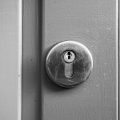

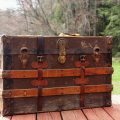
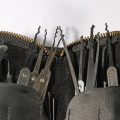

Leave a Reply